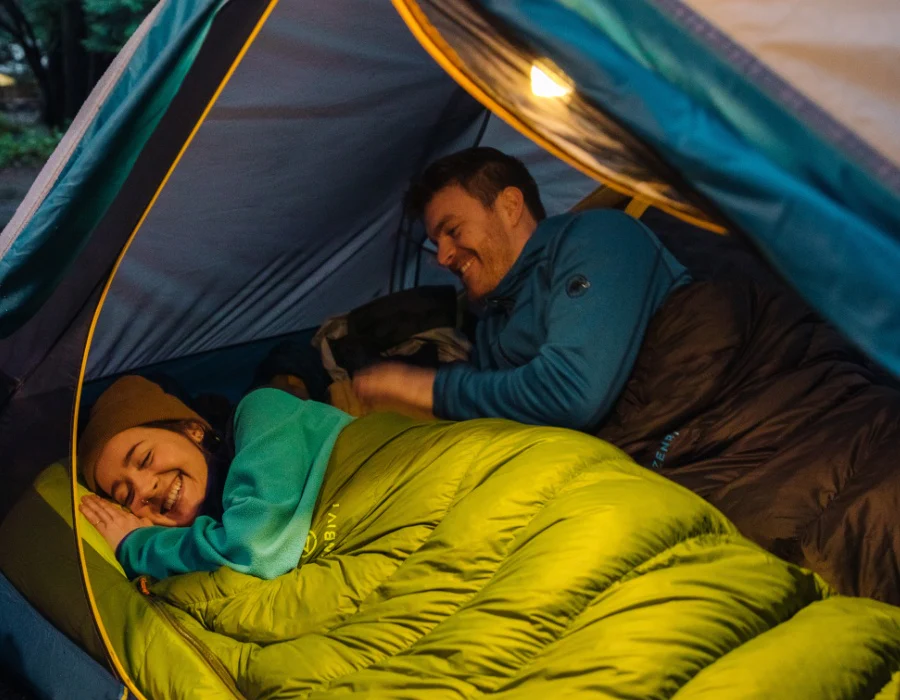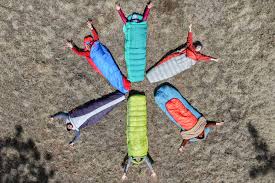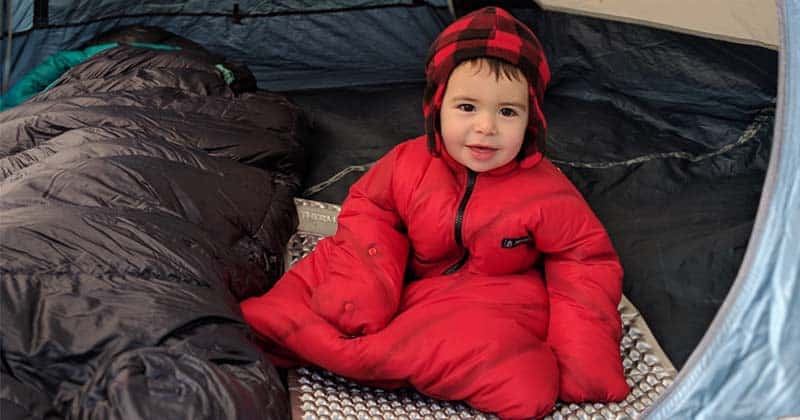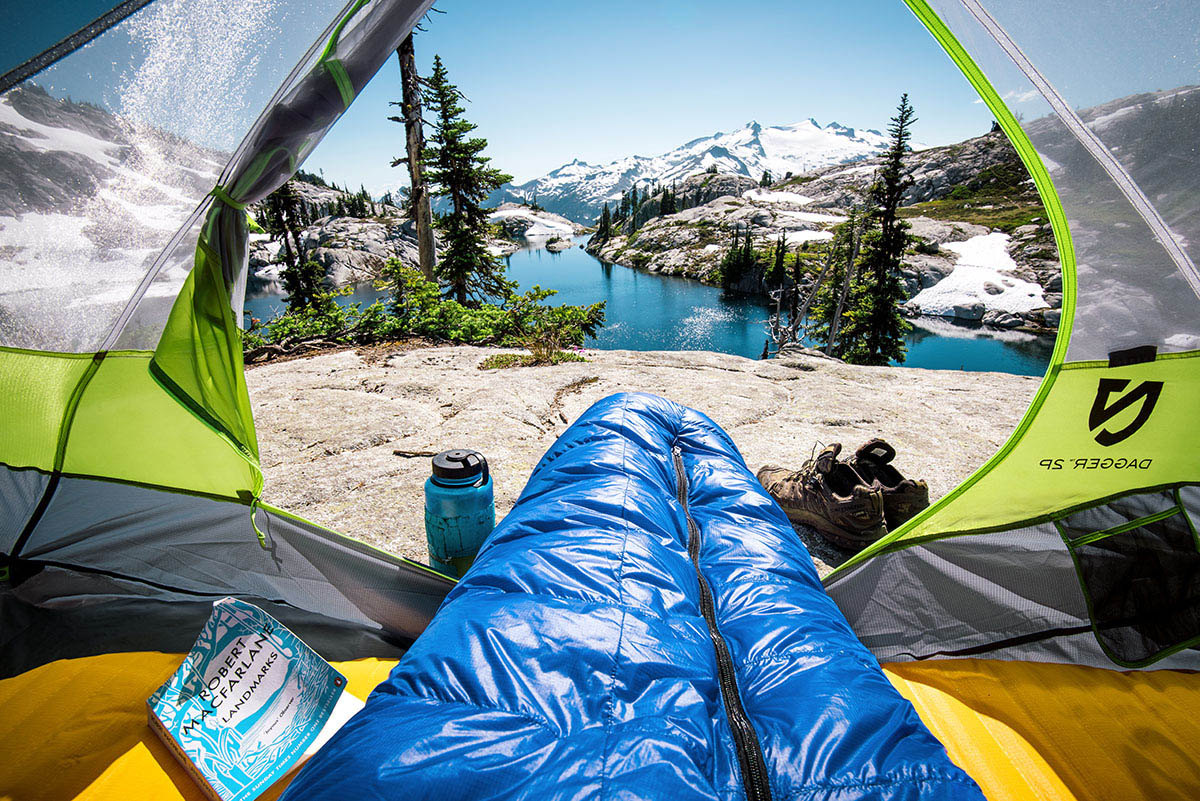Top rated camping sleeping bags – Are you planning a camping trip and in need of a reliable and comfortable sleeping bag? Look no further! We have compiled a list of the top-rated camping sleeping bags that will ensure a cozy and restful night’s sleep under the stars.
Choosing the right sleeping bag is crucial for a successful camping experience. The market is flooded with numerous options, making it overwhelming to make a decision. However, we have done the research for you and sorted through the countless options to bring you the best of the best.
Whether you are a seasoned camper or new to outdoor adventure, investing in a high-quality sleeping bag is essential. A good sleeping bag can make all the difference in your comfort and warmth throughout the night. In this article, we will present the top-rated camping sleeping bags that have been highly recommended by outdoor enthusiasts and experts alike. Get ready to make the most of your camping trip with these top-notch sleeping bags.
What is a Sleeping Bag?
A sleeping bag is an essential piece of gear for any camping or outdoor adventure. Designed to provide comfort and insulation while you sleep, a sleeping bag is a portable, lightweight bed that you can easily pack and carry with you. It consists of a shell made of synthetic or natural materials and is filled with insulation, either synthetic or down, to trap in body heat and keep you warm.
Sleeping bags come in various shapes, sizes, and temperature ratings to meet different needs and preferences. Whether you’re camping in cold temperatures or heading out on a backpacking trip, a high-quality sleeping bag will ensure you have a comfortable night’s sleep and wake up refreshed and ready for your outdoor activities.
Types of Sleeping Bags
There are different types of sleeping bags available on the market to suit various camping needs and weather conditions.
Summer bags are designed for warm weather camping and typically have temperature ratings above 40°F (4°C). They are lightweight, compact, and offer minimal insulation to keep you cool on hot summer nights.
For temperate climates and 3-season camping, 3-season bags are ideal. They usually have temperature ratings between 10°F to 32°F (-12°C to 0°C) and offer a good balance between insulation and breathability. These bags are versatile and suitable for camping in spring, summer, and fall.
Winter bags are specifically designed for cold temperatures and can handle sub-zero conditions. They have temperature ratings of 10°F (-12°C) or lower and offer maximum warmth and insulation. These bags are heavier and often feature additional insulation, draft collars, and mummy-style designs to retain body heat and keep you warm in freezing temperatures.
When it comes to sleeping bag styles, mummy sleeping bags are popular choices for their snug fit. They taper towards the feet, reducing empty space and maximizing warmth. On the other hand, rectangle sleeping bags offer a more relaxed fit and provide extra space to move around comfortably. They are often preferred by those who prioritize comfort over insulation.
Benefits of Camping with a Sleeping Bag
Camping with a sleeping bag offers numerous benefits, including insulation and comfort, making it an essential item for outdoor trips. Sleeping bags are designed to provide insulation, keeping you warm and cozy throughout the night, even in cold weather conditions. The use of synthetic insulation ensures excellent warmth to weight ratio, allowing you to stay comfortable without adding bulk to your backpack.
Sleeping bags are also designed with lightweight materials, making them easy to carry and transport during your camping adventures. This is especially important for backpackers who need to minimize the weight of their gear. The use of durable and high-quality materials ensures that the sleeping bag can withstand rugged outdoor conditions.
Another advantage of sleeping bags is the various options available to cater to different preferences. Mummy-style bags are ideal for backpacking as they have a snug fit that maximizes warmth by reducing empty space. On the other hand, rectangular bags offer a more spacious and relaxed fit, providing extra room to move around comfortably. These bags are often favored by car campers who prioritize comfort and space.
Whether you’re backpacking through the wilderness or enjoying a camping trip with friends and family, using a sleeping bag ensures insulation and comfort, guaranteeing a restful night’s sleep after a day of outdoor exploration.
Synthetic Insulation
When it comes to camping sleeping bags, one of the important factors to consider is the type of insulation used. Synthetic insulation is a popular choice for campers due to its ability to provide excellent warmth even in wet conditions. Unlike down insulation, synthetic materials retain their insulating properties even when damp, making them a reliable option for unpredictable weather.
Additionally, synthetic sleeping bags are often more affordable compared to down-filled options, making them a budget-friendly choice for outdoor enthusiasts. With advancements in technology, synthetic insulation now offers a great warmth-to-weight ratio, making these sleeping bags lightweight and easy to carry on backpacking trips.
Whether you’re camping in cold temperatures or expecting wet conditions, a sleeping bag with synthetic insulation is sure to keep you warm and comfortable throughout the night.
What is Synthetic Insulation?
Synthetic insulation is a type of insulation commonly used in camping sleeping bags to provide warmth and insulation to campers. Unlike down insulation which is made from bird feathers, synthetic insulation is made from man-made fibers.
There are different types of synthetic insulation available, including continuous filament and short-staple insulation. Continuous filament insulation is made from long, continuous fibers that are densely packed together, providing excellent warmth and maintaining loft for a longer period of time. Short-staple insulation, on the other hand, is made from shorter fibers that are crimped or twisted together. This type of insulation is known for its breathability and compressibility.
One of the advantages of synthetic insulation is its durability. Synthetic fill is highly resilient and able to withstand repeated compression, making it ideal for frequent use. Additionally, synthetic insulation has the ability to retain some warmth even when wet, which can be beneficial in wet camping conditions.
While synthetic insulation offers many benefits, there are some drawbacks to consider. Synthetic sleeping bags tend to be bulkier and heavier compared to down-filled bags. Additionally, they have a lower warmth-to-weight ratio and may not compress as small as down-filled bags.
Some of the top-rated synthetic insulated sleeping bags on the market include the REI Co-op Magma, the Big Agnes Sidewinder, and the Kelty Catena. These bags feature durable materials, excellent warmth retention, and reasonable prices, making them great options for camping in colder weather or wet conditions.
The Pros and Cons of Synthetic Insulation
Synthetic insulation in sleeping bags offers several pros and cons. One of the significant advantages of synthetic insulation is its durability. Synthetic fill is highly resilient and can withstand repeated compression, making it ideal for frequent use in camping. Moreover, synthetic insulation retains some warmth even when wet, which is beneficial in damp camping conditions.
However, there are a few drawbacks to consider. Synthetic sleeping bags tend to require more insulation to provide the same level of warmth as down-filled bags. This means that synthetic bags can be bulkier and take up more space when packed. Additionally, they have a lower warmth-to-weight ratio compared to down-filled bags, making them a bit heavier.
Despite these disadvantages, synthetic insulation still offers some distinct advantages. Its ability to provide warmth even when wet makes it a reliable choice for camping in damp environments. Furthermore, the durability and resilience of synthetic insulation make it well-suited for frequent use in rugged outdoor conditions.
The Best Synthetic Insulated Sleeping Bags
When it comes to camping in wet or damp environments, synthetic insulated sleeping bags are a reliable choice. Designed to mimic the warmth retention properties of down, synthetic fills offer the added advantage of providing some warmth even when wet. This makes them ideal for unpredictable weather conditions.
There are different brands of synthetic fills available, categorized as short-strand or continuous fiber synthetics. Each type has its own benefits, with continuous fiber synthetics typically offering better insulation performance.
One important factor to consider when choosing a synthetic insulated sleeping bag is the temperature rating. This rating indicates the lowest temperature at which the bag will keep you warm. It’s crucial to select a bag with a temperature rating suitable for the specific climate and conditions you’ll be camping in.
Another aspect to consider is the weight-to-warmth ratio. Synthetic insulated bags tend to be slightly heavier than their down-filled counterparts, due to the additional insulation required to provide the same level of warmth. However, many manufacturers are working on improving this ratio, creating lighter synthetic options for backpackers and outdoor enthusiasts.
Lastly, it’s worth noting that synthetic insulated sleeping bags can be bulkier when packed compared to down-filled bags. This is a trade-off for their ability to provide warmth even when wet. Depending on your space constraints and packing preferences, this may or may not be a significant factor to consider.
Overall, the best synthetic insulated sleeping bags offer a combination of reliable warmth, even in wet conditions, and durability for rugged outdoor use. When choosing a bag, consider factors such as the type of synthetic fill, temperature rating, weight-to-warmth ratio, and packed size to find the best option for your camping needs.
Sleeping Pad Considerations
When it comes to choosing a camping sleeping bag, there are several important factors to consider. In addition to the insulation type, temperature rating, and weight-to-warmth ratio, another crucial consideration is the sleeping pad.
A sleeping pad is a separate cushioning layer that goes underneath your sleeping bag to provide comfort and insulation from the ground. It not only helps to provide a more comfortable night’s sleep but also prevents heat loss to the ground, keeping you warmer throughout the night.
Sleeping pads come in various thicknesses, materials, and designs, so it’s important to select one that suits your camping needs. Some features to consider include the pad’s insulation properties, durability, weight, packability, and comfort level.
It’s also essential to make sure the size and shape of the pad match well with your sleeping bag to avoid any gaps or discomfort. By carefully considering these factors, you can ensure a comfortable and restful night’s sleep during your camping adventures.
What is a Sleeping Pad?
A sleeping pad is an essential piece of gear for camping that often gets overlooked. It is a durable, lightweight mat that provides insulation and cushioning between your sleeping bag and the ground. The primary purpose of a sleeping pad is to help insulate your body from the cold ground, enhancing your sleeping experience and keeping you warm throughout the night.
When you lie down on a sleeping bag directly on the ground, your body heat gets conducted downwards, resulting in a loss of warmth. A sleeping pad acts as a barrier, preventing this heat loss by providing an insulating layer between you and the ground.
There are different types of sleeping pads available, each with distinct features. Foam sleeping pads, for example, are lightweight, affordable, and provide excellent insulation. They are also durable and resistant to punctures. Self-inflating sleeping pads are another popular choice. These pads consist of foam insulation that expands automatically when the valve is opened, making them convenient and comfortable.
Inflatable sleeping pads offer the most cushioning and are ideal for those who prioritize comfort. They can be easily inflated using a pump or by blowing into the valve. Additionally, inflatable sleeping pads are adjustable, allowing you to control the firmness.
Overall, a sleeping pad is a crucial investment for any camping trip. It not only provides insulation but also ensures a comfortable night’s sleep by cushioning your body against uneven or rocky terrain. So, don’t forget to pack a sleeping pad for your next outdoor adventure and enjoy a cozy and restful night under the stars.

Different Types of Sleeping Pads
When it comes to camping, a good night’s sleep is essential, and choosing the right sleeping pad can make all the difference. Sleeping pads not only provide cushioning but also act as an insulating layer, keeping you warm and comfortable throughout the night.
There are several types of sleeping pads available on the market, each with its own unique features. Self-inflating pads are a popular choice for campers. These pads consist of foam insulation that expands automatically when the valve is opened. They are convenient and comfortable, offering a good balance between cushioning and insulation.
Air pads, on the other hand, provide the most cushioning and allow for adjustable firmness. They can be easily inflated with a pump or by blowing into the valve. However, they may require more effort to set up and are not as insulating as other types of sleeping pads.
Foam pads are lightweight, affordable, and provide excellent insulation. They are durable and resistant to punctures, making them a great choice for rugged camping trips. Closed-cell foam pads are even more compact and lightweight, making them ideal for backpacking.
When choosing a sleeping pad, it’s important to consider factors such as size and thickness. Opting for a pad that is the right size for your body will ensure optimal comfort and support. Additionally, thicker pads provide more cushioning, while thinner pads are lighter and more packable.
Choosing the Right Size and Thickness of Sleeping Pad
Choosing the right size and thickness of a sleeping pad is crucial for a comfortable and well-insulated camping experience. The size of the sleeping pad should match the dimensions of your sleeping bag to ensure a proper fit. This prevents any gaps between the pad and the bag, reducing the risk of cold air seeping in and disrupting your sleep.
When it comes to thickness, there are different options available. Thicker pads provide more cushioning, making them ideal for those who prioritize comfort. They also offer better insulation, keeping you warm in colder temperatures. Thinner pads, on the other hand, are lighter and more packable, making them perfect for backpacking trips where weight and space are limited.
Another important factor to consider is the R-value of the sleeping pad. The R-value measures the pad’s insulation capabilities, with higher values indicating better insulation. For colder conditions, choose a pad with a higher R-value to ensure warmth throughout the night. In contrast, a lower R-value may be sufficient for warmer climates or summer camping trips.
Draft Collar Considerations
When it comes to choosing a top-rated camping sleeping bag, there are numerous factors to consider. One crucial element to keep in mind is the presence of a draft collar. A draft collar is a protective feature built into some sleeping bags. It is an insulated collar that surrounds the neck area, effectively sealing in body heat and blocking cold air from seeping in. This is especially important for those who are cold sleepers or plan to camp in colder temperatures.
A sleeping bag with a draft collar ensures that you stay warm and comfortable throughout the night, even in chilly conditions. Look for camping sleeping bags that have a well-designed draft collar to provide the extra insulation and heat retention you need for a cozy and restful sleep.
What is a Draft Collar?
A draft collar is an important feature found in many camping sleeping bags. Its purpose is to prevent heat loss and keep cold drafts from entering the sleeping bag.
When we sleep in a camping sleeping bag, our body heat can escape through the opening of the bag. This can be especially problematic during cold temperatures or windy nights. That’s where the draft collar comes in.
A draft collar is a padded area that surrounds the neck and shoulder region of the sleeping bag. It is designed to fit snugly against the body, creating a seal that prevents heat from escaping and cold drafts from entering. The collar acts as a barrier between the inside and outside of the sleeping bag, helping to maintain a comfortable temperature throughout the night.
By using a draft collar, campers can sleep more comfortably and confidently, knowing that their body heat will be retained and cold drafts will be kept at bay. This feature is particularly important for cold sleepers or when camping in colder weather.

The Benefits of Using a Draft Collar
Using a draft collar in a camping sleeping bag offers numerous benefits, especially when camping in cold temperatures or during chilly nights. The draft collar is a padded section that encircles the neck and shoulders within the sleeping bag.
One of the main advantages of a draft collar is its ability to prevent heat loss. When we sleep, body heat tends to escape through the opening of the sleeping bag. However, the draft collar acts as a barrier between the inside and outside of the bag, sealing in the warmth and preventing cold drafts from entering. This insulation helps to maintain a comfortable temperature throughout the night, ensuring a good night’s rest.
The draft collar provides extra insulation, particularly on cold nights. With its snug fit against the body, it effectively traps body heat within the sleeping bag, allowing campers to stay warm and cozy. This feature is particularly beneficial for cold sleepers or when camping in colder weather.
Overall, the key advantages of using a draft collar are keeping cold air out and trapping body heat inside the sleeping bag. By utilizing this feature, campers can sleep comfortably and confidently, knowing that their body heat will be retained and cold drafts will be kept at bay. So, whether you’re camping in cold temperatures or just want extra warmth, a sleeping bag with a draft collar is a wise choice.
How to Choose the Right Draft Collar for Your Needs
When choosing a draft collar for your camping sleeping bag, there are several key factors to consider to ensure maximum comfort and warmth.
Firstly, consider the design and style of the draft collar. Some sleeping bags have a draft collar built-in, while others may have a detachable or adjustable collar. Look for a design that suits your personal preferences and sleeping style.
Next, consider the materials used in the draft collar. Synthetic materials tend to provide better insulation and are resistant to moisture, making them ideal for camping in wet or cold conditions.
Another important factor is the fit of the draft collar. It should fit snugly around your neck to prevent cold drafts from entering the sleeping bag. Look for a collar that is adjustable, allowing you to customize the fit according to your comfort level.
Additionally, consider the overall temperature rating of the sleeping bag. A draft collar can help enhance the bag’s insulation capabilities, particularly in colder temperatures. Look for a bag with a draft collar that is suitable for the lowest temperature you expect to encounter during your camping trips.

The Best Sleeping Bag
When it comes to top-rated camping sleeping bags, the Kelty Tuck 20 Thermapro stands out as a true winner. This sleeping bag combines excellent insulation and comfort to keep you cozy throughout the night.
One of the standout features of the Kelty Tuck 20 Thermapro is its silky soft polyester material. Not only does this material feel great against your skin, but it also provides superior warmth. Whether you’re out camping in cold temperatures or chilly nights, you can rely on the Thermapro insulation to keep you warm and comfortable.
Another factor that sets the Kelty Tuck 20 Thermapro apart is its thoughtful design. The mummy-style bag offers a snug fit, allowing for maximum heat retention. Additionally, this sleeping bag features a draft collar and a full-length zipper, further minimizing heat loss. No matter how cold it gets outside, you can trust that the Kelty Tuck 20 Thermapro will provide you with the necessary insulation to enjoy a peaceful and warm night’s sleep.
Pros:
– Silky soft polyester material for ultimate comfort.
– Excellent insulation for cold temperatures.
– Draft collar and full-length zipper minimize heat loss.
– Affordable price.
– Available in both men’s and women’s sizes.
Cons:
– Limited color options.
See also
Our pick
Our top pick for a camping sleeping bag is the updated 2023 version of the REI Co-op Siesta Hooded 20 Sleeping Bag. With its impressive features and reliable performance, it’s no wonder why this sleeping bag is highly rated among outdoor enthusiasts.
The REI Co-op Siesta Hooded 20 Sleeping Bag is designed to keep you warm and comfortable in temperatures as low as 20°F. It achieves this level of insulation with its recycled poly-fill insulation, which not only provides excellent warmth but also contributes to the bag’s eco-friendly credentials.
The water-resistant polyester taffeta shell and interior ensure that you stay dry and comfortable even in damp conditions. This feature is particularly important if you encounter wet sleeping conditions or unpredictable weather during your camping trips.
One standout feature of the REI Co-op Siesta Hooded 20 Sleeping Bag is the inclusion of a loose hood and draft collar. These additions provide extra warmth and help to prevent cold air from entering the bag, ensuring that you stay cozy throughout the night.
Upgrade pick
The Marmot Women’s Teton sleeping bag is the perfect upgrade for those who prioritize warmth and comfort, especially for cold sleepers. Made with a silky-soft fabric and filled with well-lofted, water-resistant down, this sleeping bag ensures a cozy and comfortable night’s sleep even in chilly temperatures.
One of the key design elements of the Marmot Women’s Teton sleeping bag is its narrower foot box and shoulder girth. This tailored fit not only provides a snug and secure feel but also helps to enhance the bag’s overall warmth efficiency. Additionally, the sleeping bag features an additional footbox zipper, generously insulated footbox, and draft tubes, which combine to prevent any cold air from seeping in and keeping your feet toasty warm.
For added convenience, the Marmot Women’s Teton sleeping bag is equipped with a cinching hood that can be adjusted to fit your head perfectly and keep heat from escaping. The bag also features dual half-length zippers with plow-shaped zipper shoes, allowing for easy ventilation and temperature regulation. Plus, there’s an internal zip pocket to safely store your essentials within reach.
The Marmot Women’s Teton sleeping bag offers exceptional warmth and comfort for cold sleepers, thanks to its well-lofted down insulation and thoughtful design elements. Upgrade to this top-rated sleeping bag and experience the ultimate in camping comfort and warmth.
Final Thoughts
Final Thoughts: With a wide range of designs and features available, it can be difficult to narrow down your selection for the perfect camping sleeping bag. However, the two picks featured here are among the top-rated options currently available on the market. The Kelty Tuck 20 Thermapro offers excellent insulation at an affordable price, while the REI Co-op Siesta Hooded 20 Sleeping Bag is the perfect option for those who prioritize comfort and warmth.
If you’re looking for an additional level of luxury, then consider upgrading to the Marmot Women’s Teton sleeping bag. No matter which of these top-rated sleeping bags you choose, you can rest assured that you’ll be able to enjoy a cozy night’s sleep in the great outdoors.














Leave a Reply